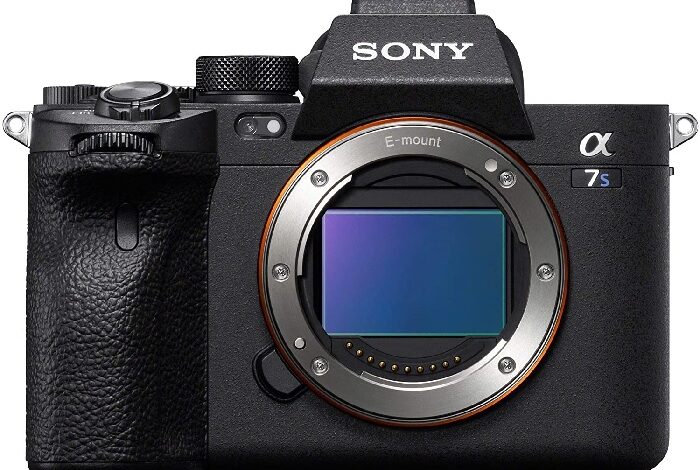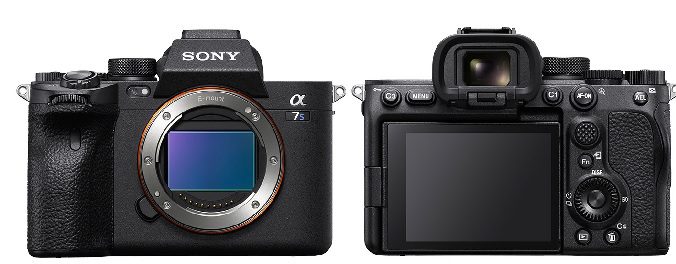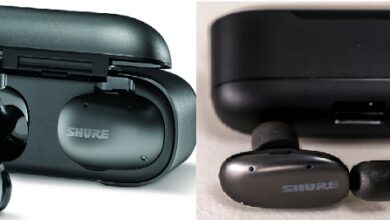Sony A7s III Mirrorless Camera Review

A7, A7R, and A7S are the three lines of Sony’s A7 series which includes Sony A7s III Mirrorless Camera. Sony A7 III, is an all-rounder, while the A7R cameras, such as the Sony A7R IV, are high-resolution versions. Sony A7S III is the long-awaited update of Sony A7S II, which is the most video-centric cam.
Sony A7S III, as earlier A7S versions, has a full-frame sensor having 12.1 million effective pixels. Maintaining the resolution low helps the camera’s low-light performance by lowering noise levels.
Sony A7S III features the highest-resolution electronic viewfinder we’ve seen to date and is the first Sony A7-series camera to include a vari-angle display, in addition to a slew of other advancements to its video specifications. This is something that videographers as well as photographers have ‘demanded,’ as per Sony.
Sony A7s III Mirrorless Camera Specification
| Brand | Sony |
| Type | Mirrorless |
| Series | Alpha |
| Title | Sony Alpha A7S III (Body) Mirrorless Camera |
| Price In India | 167999.00 |
| Type | CMOS Sensor |
| Size W X H | 35.6 x 12.8 mm, FullFrame inch |
| Processor Model | BIONZ XR Image Processor |
| Effective Resolution | 12 MP Resolution |
| Mount | Sony E-mount |
| Built-In Flash | No |
| Hot Shoe Flash Mount | Yes |
| Wifi | Yes |
| HDMI | Yes |
| Bluetooth | Yes |
| USB | Yes |
| ViewFinder | Yes, Electronic Viewfinder |
| Display Type | LCD |
| Display Size | 3 Inch |
| Display Resolution Noof Dots | 1440000 dots |
| Moveable Display | Yes |
| Touch Screen | Yes |
| Brightness Adjustment | Yes, Levels |
| Memory Card Type | SD, SDHC, SDXC |
| Iso | Auto, 80-102400 ISO |
| Auto Focus | Yes, Contrast detection, Phase detection |
| Manual Focus | Yes |
| Image Stabilization | Yes, Type: Sensor |
| Microphone | Yes |
| Self Timer | 10 seconds, 2 seconds |
| White Balance Type | Auto, Cloudy, Custom, Flash, Fluorescent, Incandescent, Manual |
| Image File Formats | JPEG, RAW |
| Video File Formats | MOV |
| Exposure Modes | Aperture priority, Full manual, Program Mode, Shutter Speed priority |
| Dimensions WxHxD | 128.9 x 96.9 x 69.7 mm |
| Weight | 614 grams |
| Available Color Options | Black |
| Battery Model | NP-FZ100 |
| Battery | Rechargeable(proprietary) |
| Battery Type | Li-Ion |
| Battery Capacity | 2280 mAh |
| No Of Shots | 600 Shots |
| Accessories Inbox | Sony A7S III (Body) Camera, Batteries, NP-FZ100 Charging AC Adapter, User Manual & Warranty Card |

Sony A7s III Mirrorless Camera Features
Although the resolution is like A7S II, Sony A7S III’s 12.1MP full-frame CMOS sensor is new as well as includes a backside-illuminated (BSI) construction. This architecture allows the photosites to receive more light than a traditional CMOS sensor, resulting in improved low-light performance.
Sony claims that employing a BSI layout doubles the readout speed, resulting in a variety of performance improvements.
Sony has also paired the new sensor with Bionz XR, a new processing engine that Sony claims can handle data up to 8 times faster.
This sensor & processing engine combination allows Sony A7s III to shoot video with up to Fifteen stops or more dynamic range at low ISO settings and in S-Log, in addition to improving low-light performance and providing a sensitivity range of ISO 40-409,600 for video.
The A7S III’s stills are said to have a 14EV dynamic range.
The A7S III is also touted to have little rolling shutter (jello) effect because to the faster readout and processing.
Sony A7s III Mirrorless Camera Colour
Sony A7s III supports 10bit S-Log 2 and 3, as expected. According to Sony, the findings produced by S-Log3 are identical to those produced by Sony PXW-FX9.
Sony has been working on the colour science underpinning the S-Gamut3 and S-Gamut3 features on A7S III.
Once s709 LUT has been applied, the camera is said to offer significantly greater colour saturation at high sensitivity (ISO) levels than A7S II.
That’s fantastic news for anyone looking to grade their film, but Sony hasn’t forgotten about inexperienced videographers or those who seek a ‘out of camera’ option.
As a result, Sony A7s III comes with a total of ten colour profiles, four of which are brand new.
Saturation, contrast, shadow, highlight, fade, sharpness, sharpness range, as well as clarity are among the 8 image control factors that can be tweaked.

Sony A7s III Mirrorless Camera Autofocus
Although the Sony a7S II’s autofocus efficiency isn’t particularly impressive, Sony’s autofocus systems are currently among the best available in a mirrorless camera, if not any camera. I say one of the best because the Canon EOS R6 and Canon EOS R5, which have an astounding capability to detect eyes in the frame – even animals eyes in video – have taken the crown for Eye AF efficiency.
Read Also –Intel Core i9-12900ks Could Push Alder Lake CPUs To New Levels
In any case, Sony A7s III boasts a hybrid AF system with 759 phase-detection points and 425 contrast-detection points, which isn’t surprising. The phase-detection sites cover 92 percent of the sensor, which is useful.
Additionally, the real-time Eye AF system is now accessible, and it is touted to be 30% better than earlier systems. It can also shoot both stills and video. In stills mode, it can recognise either human or animal eyes, while in video mode, it can locate at all human eyes.
Furthermore, AF system is reported to be sensitive down to -6EV, implying that it should be designed to manage in the dim light that the A7S III excels in.
When capturing stills, you want the autofocus mechanism to be as quick as possible, but whenever shooting video, you need smoother, slower focus shifts.
Conclusion
After the Canon EOS R5’s 8K performance, Sony A7S III may appear to be a letdown. I’m sure some videographers were looking for a significant increase in resolution over the A7S II’s 12-megapixel.
Meanwhile, because Sony already has 61Mp A7R IV as well as the 24-megapixel Sony A7s III, keeping with 12-megapixel implies Sony A7s III offers even better low-light performance than its predecessor, as well as a much superior autofocus system, a vari-angle screen, as well as the highest-resolution viewfinder available.
The A7S III intends to make capturing 4K video easier than ever before, and that the video quality will be the best 4K footage you can have in a Sony camera. It does not disappoint, as the footage is of exceptional quality.






